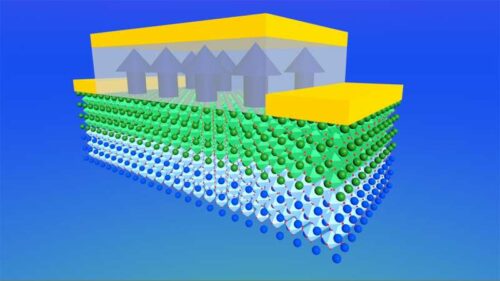By masterfully manipulating unique materials to switch between insulator and metal states, a new stage for next-generation transistors has been set up, promising a seismic shift in the design and capabilities of electronic devices.

For decades, semiconductors have been the cornerstone of electronic devices, occupying the “Goldilocks zone” of electrical conductivity: not as conductive as metals, but more so than insulators. This property has made them ideal for creating transistors, which are essential for encoding the binary data that underpins modern computing. However, as electronic devices have become increasingly miniaturized, engineers are encountering the limits of how small semiconductor-based transistors can be made.
The team led by Professor Xia Hong at the University of Nebraska have made a significant advancement in the field of electronic materials, potentially paving the way for the development of smaller and more efficient digital devices. This team of scientists has successfully managed to control the transition of a material class known as Mott insulators, which can switch between being an electricity-resisting insulator and a current-conducting metal. This discovery could herald a new era in the design of transistors, the fundamental building blocks of digital technology. The search for alternatives has led researchers to explore Mott insulators, materials that have long intrigued scientists due to their unique electronic properties. Unlike in semiconductors or metals, electrons in Mott insulators are not free to move; they are localized due to strong interactions with other electrons. Yet, under certain conditions such as increased temperature or electron density, these materials can undergo a transition to become conductive metals.
Professor Hong’s team has innovatively used a ferroelectric gate insulator to control this transition. By applying voltage to change the polarization of the ferroelectric material, they can precisely manipulate the Mott insulator’s state, switching it between insulator and metal. This approach mimics the functionality of semiconductors but with the potential for even greater miniaturization and efficiency. This breakthrough not only challenges the traditional dichotomy of materials being classified strictly as metals or insulators but also opens up new possibilities for electronic devices. By harnessing the unique properties of Mott insulators, future technologies could be significantly smaller, faster, and more powerful, marking a new direction in the ongoing evolution of digital devices.






